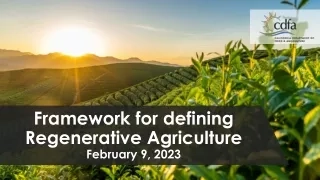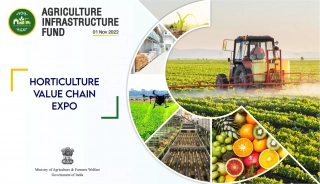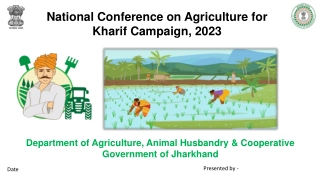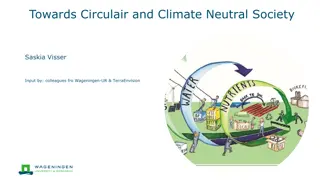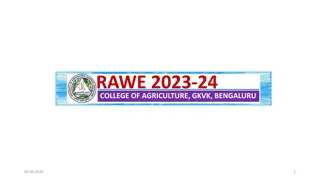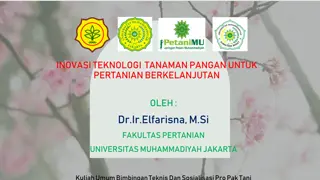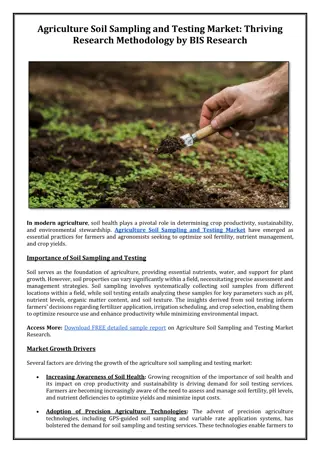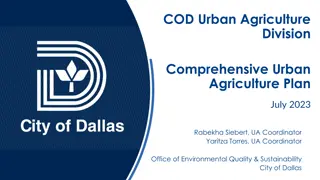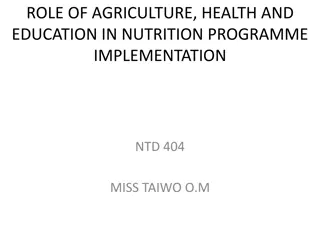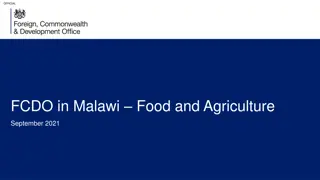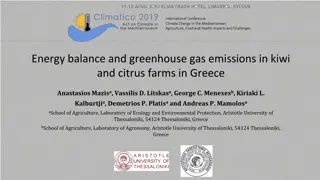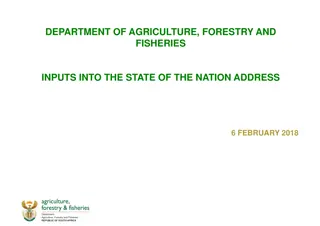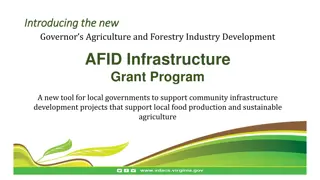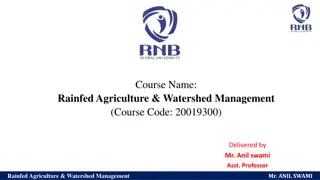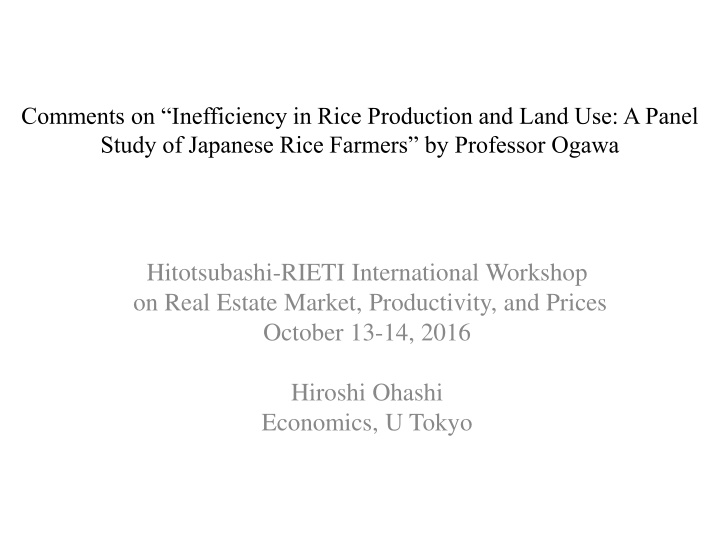
Efficiency in Japanese Rice Production: A Panel Study Analysis
Explore the efficiency of rice production in Japan through a panel study, highlighting differences between efficient and inefficient farmers. The study uncovers factors influencing production costs, income levels, and land utilization among Japanese rice farmers between 2008 and 2013.
Download Presentation

Please find below an Image/Link to download the presentation.
The content on the website is provided AS IS for your information and personal use only. It may not be sold, licensed, or shared on other websites without obtaining consent from the author. If you encounter any issues during the download, it is possible that the publisher has removed the file from their server.
You are allowed to download the files provided on this website for personal or commercial use, subject to the condition that they are used lawfully. All files are the property of their respective owners.
The content on the website is provided AS IS for your information and personal use only. It may not be sold, licensed, or shared on other websites without obtaining consent from the author.
E N D
Presentation Transcript
Comments on Inefficiency in Rice Production and Land Use: A Panel Study of Japanese Rice Farmers by Professor Ogawa Hitotsubashi-RIETI International Workshop on Real Estate Market, Productivity, and Prices October 13-14, 2016 Hiroshi Ohashi Economics, U Tokyo
Summarizing the paper A good contribution to the literature, where little quantitative work has been done on agricultural sector in Japan. The purpose of the paper is to (1) estimate the efficiency of rice production in Japan, and (2) identify the differences between efficient and inefficient rice farmers. The paper identifies the increasing returns to scale of 1.02. Inefficient farmers are found to be inflexible in utilizing inputs. Efficient farmers tend to produce non-rice crops if they have many smaller plots of land. Data from 2008 to 2013 on Rice Production Cost Statistics with 5453 observations over 47 prefectures. 2
Average Costs by land size (per 60 kg of rice production) Yen 30,000 less than 0.5ha 25,000 0.5 1ha Average income per 60kg of rice production 20,000 1 2ha 2 3ha 3 5ha 10 15ha 7 10ha 15,000 5 7ha 10,000 Land size average (excl Hokkaido and Okinawa) 5,000 Data source: Production size: Census of Agriculture and Forestry 2010 Income and cost: Cost of Production of Rice, Wheat and Barley, 2009 0 ha 0 2 4 6 8 10 12 Census 2000: Rice Production Averages for Rice Farming Number of farmers with income from rice sales Avg. number of rice farmers in a community Number of rural communities Number of rice crop farmers Total Cultivated area (thou. hectares) Cultivated area (ares) In-house labor hrs. (person, day) Agricultural machinery cost (\ ten thousand) 42 prefectures 1,449.4 116,859 1,912,925 1,648,311 16.4 75.8 206.4 395.3 3
Frequency on Sizes 60 60 Data: Census of Agriculture and Forestry 2010 Data: Census of Agriculture and Forestry 2010 Number of Rice Farmers (10 thousands) Number of Rice Farmers (10 thousands) 40 40 20 20 0 0 0 50 100 150 200 0 2,500 5,000 7,500 10,000 12,500 15,000 Rice-cultivated area (ares) [by 5ares segments] Daily yield of rice-farm labor per person (yen) [by 500yen segments] 4
Comments on Estimation Production function; factor demand function; dynamic factor demand function; and land- utilization function are independently estimated. However, they are closely linked, and the estimation can be handled in a unified way. Selection bias (exits of farmers; or changes in plot size for a particular farmer) Inputs endogeneity 5
Other Comments What lead to the paper s conclusion on the differences between efficient and inefficient farmers? Anticipation on the opportunity to convert farm land to other uses (Saito and Ohashi, 2011) Subsidies on farmers producing feed (not food) rice Eliminating production subsidies on substituting from rice to beans or wheat. Etc Welfare analysis is perhaps also possible with external estimates on demand elasticity of food rice (e.g., -3.45 from Arahata, 2010) The paper opens up many interesting policy questions to ask on the effectiveness of agricultural policies. 6

